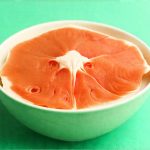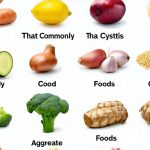Bladder discomfort can significantly impact quality of life, ranging from mild irritation to debilitating pain. Many factors contribute to bladder issues, including infections, neurological conditions, and lifestyle choices. While medical intervention is often necessary for diagnosis and treatment, dietary modifications play a surprisingly powerful role in managing symptoms and promoting long-term bladder health. This isn’t about restrictive diets or eliminating entire food groups; it’s about understanding how certain foods can either aggravate or soothe the bladder, and then making informed choices to support optimal function. It’s also important to remember that everyone reacts differently – what triggers one person may not bother another, so a degree of personalized experimentation is often required.
The connection between diet and bladder health stems from several factors. Firstly, certain foods contain compounds that can directly irritate the bladder lining, increasing inflammation and urgency. Secondly, food sensitivities or intolerances can contribute to systemic inflammation, which in turn affects the bladder. Finally, hydration levels are crucial for overall bladder function – both too little and too much fluid can exacerbate problems. A proactive approach to diet, therefore, isn’t just about avoiding irritants; it’s about nourishing the body with foods that support a healthy inflammatory response, adequate hydration, and strong pelvic floor muscles. This article will explore practical food plans and dietary adjustments for lasting bladder ease, focusing on both what to limit and what to embrace. Consider exploring daily food diary tips to pinpoint your triggers.
Dietary Pillars for Bladder Wellness
A cornerstone of any effective bladder-focused diet is understanding the concept of bladder irritants. These are substances that can trigger symptoms like urgency, frequency, pain, or incontinence. Common culprits include caffeine, alcohol, artificial sweeteners, spicy foods, acidic fruits (citrus and tomatoes), carbonated beverages, and chocolate. The challenge isn’t necessarily to eliminate these entirely—though for some individuals complete avoidance is necessary—but rather to identify personal triggers and moderate intake accordingly. Keeping a detailed food diary can be incredibly helpful in pinpointing which foods exacerbate symptoms. To support your dietary changes, you might also find smart grocery choices beneficial.
Beyond avoiding irritants, focusing on anti-inflammatory foods is vital. Chronic inflammation often underlies bladder issues, so incorporating foods known to combat inflammation can make a significant difference. These include fatty fish rich in omega-3 fatty acids (salmon, mackerel, sardines), berries packed with antioxidants, leafy green vegetables, and nuts and seeds. A diet rich in these nutrients doesn’t just benefit the bladder; it supports overall health and well-being. It’s also important to consider gut health. A healthy gut microbiome is linked to reduced inflammation throughout the body – including the urinary tract.
Finally, proper hydration is non-negotiable, but how you hydrate matters. While drinking enough water is essential, rapidly consuming large volumes can overwhelm the bladder and increase urgency. Instead, spread fluid intake evenly throughout the day. Water should be your primary beverage, but herbal teas (non-caffeinated) like chamomile or ginger can also be soothing. Avoid sugary drinks, which contribute to inflammation and offer no nutritional value. Aim for pale yellow urine as an indicator of adequate hydration—darker urine suggests dehydration, while completely clear urine might indicate overhydration. Learn more about hydration strategies to optimize your fluid intake.
Soothing Foods & Beverages
Focusing on foods that actively calm the bladder is a powerful strategy. Certain fruits and vegetables are particularly beneficial due to their high water content and low acidity. Cucumbers, watermelon (in moderation), pears, and blueberries are excellent choices. These provide hydration without overwhelming the bladder or causing irritation. Incorporating complex carbohydrates like sweet potatoes, quinoa, and oats can also be helpful as they provide sustained energy and don’t contribute to inflammation.
Herbal teas beyond chamomile and ginger deserve mention. Dandelion root tea is a natural diuretic that can help flush the urinary tract without irritating the bladder. However, use caution if you have kidney problems. Marshmallow root tea is known for its soothing properties and can coat and protect the bladder lining. Again, it’s vital to choose caffeine-free options and consume in moderation. Remember that herbal remedies are not a substitute for medical treatment; they should be considered complementary approaches.
When preparing meals, prioritize gentle cooking methods like steaming, poaching, or baking over frying or grilling, which can introduce inflammatory fats into the diet. Seasoning with herbs instead of spices is also beneficial. Avoid excessive salt, as it can contribute to dehydration and bladder irritation. Ultimately, the goal is to create a dietary pattern that prioritizes nourishment, hydration, and minimal inflammation—a foundation for lasting bladder ease.
Navigating Food Sensitivities & Intolerances
Food sensitivities and intolerances often go undetected but can play a significant role in triggering bladder symptoms. Unlike food allergies, which cause immediate and severe reactions, sensitivities are more subtle and can manifest as chronic inflammation or digestive issues that indirectly affect the bladder. Common culprits include dairy, gluten, soy, and corn. Identifying these requires careful observation and potentially elimination diets under the guidance of a healthcare professional.
A simple approach to identifying potential food sensitivities is an elimination diet. This involves removing suspected trigger foods from your diet for 2-3 weeks and then gradually reintroducing them one at a time while monitoring for any changes in bladder symptoms. It’s crucial to keep a detailed food diary during this process, noting everything you eat and any associated symptoms. If a particular food triggers a reaction, it should be eliminated or significantly reduced from your diet.
It’s important to distinguish between a true allergy, intolerance, and sensitivity. Allergies require strict avoidance and often involve anaphylaxis risk; intolerances are typically digestive issues like bloating or gas; sensitivities can be more varied and affect different systems, including the urinary tract. Working with a registered dietitian or healthcare provider is essential for navigating elimination diets effectively and ensuring you receive adequate nutrition while restricting certain foods. To assist in this process, consider reviewing tips to identify food triggers.
The Role of Pelvic Floor Exercises & Dietary Synergy
While diet plays a crucial role in bladder health, it’s most effective when combined with other supportive practices, particularly pelvic floor exercises (Kegels). A strong pelvic floor helps support the bladder and urethra, reducing leakage and improving control. These exercises involve contracting and relaxing the muscles that support the pelvic organs – essentially squeezing as if you are stopping urination mid-stream.
To perform Kegels effectively:
1. Identify your pelvic floor muscles by attempting to stop the flow of urine (though don’t make this a regular practice).
2. Contract these muscles for 3-5 seconds, then relax for the same amount of time.
3. Repeat 10-15 times, several times throughout the day.
Dietary changes can enhance the effectiveness of pelvic floor exercises. For example, adequate hydration ensures that the bladder is functioning optimally and provides a foundation for effective muscle training. Consuming foods rich in magnesium (leafy greens, nuts, seeds) supports muscle function and reduces cramping. Avoiding bladder irritants minimizes inflammation and allows the pelvic floor muscles to work more efficiently. To learn about related practices, explore everyday movements that support bladder health.
Ultimately, achieving long-term bladder ease requires a holistic approach that integrates dietary modifications, exercise, and mindful hydration. It’s about understanding your body’s unique needs and creating a lifestyle that supports optimal urinary function—a journey towards greater comfort, confidence, and quality of life. You can also support this process with relaxation-focused nutrition.





















